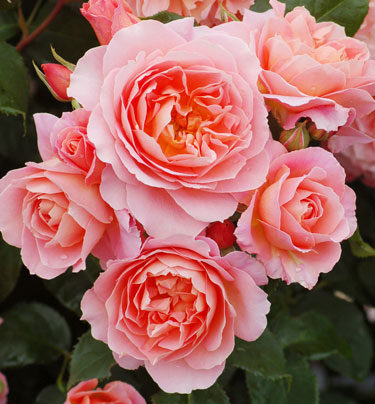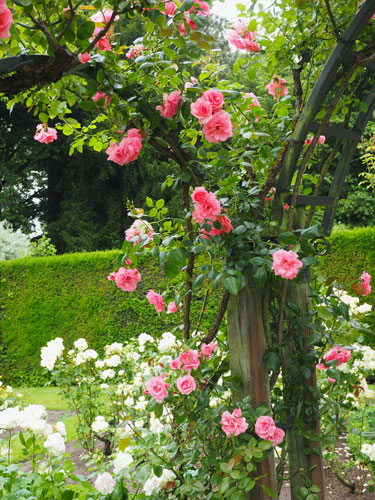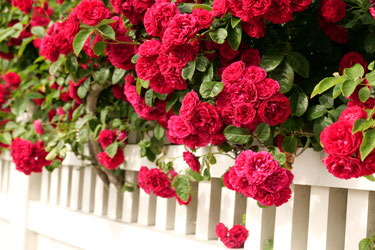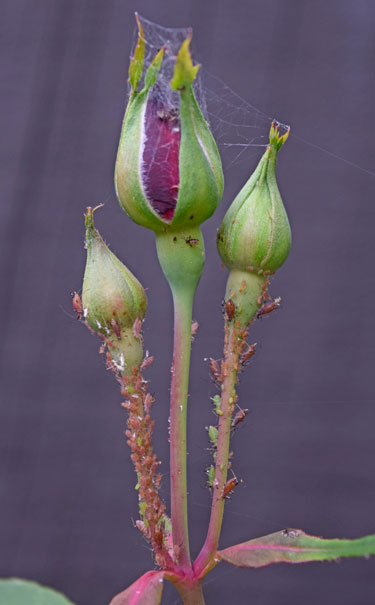A beginners guide to growing beautiful roses
There are no secrets behind growing the worlds most loved flowers. Think sunshine and good soil at planting time, then follow the basics and your roses will reward you with their most beautiful best.
Sun
In order to thrive and give their best blooming, roses like plenty of sun, particularly morning sun. Plant them where they will get at least a half day of direct sun every day. Take care not to plant them too close to trees as these will deprive them not only of sun, but moisture and nutrients too.
Soil
The best soil for roses holds plenty of moisture and nutrients, which means a clay-based soil can be a good thing. Roses are long-lived plants, so it is well worth spending time enriching the soil before planting. If possible, avoid planting in soil where old roses have just been removed. If a new planting site isn’t available, dig a large hole and backfill with fresh soil.
Even though roses love water, it is important that the soil doesn't become waterlogged. Raising beds 15–20 cm above the ground level and digging in plenty of compost can significantly improve drainage. Conversely, roses can struggle on light sandy soil but this also can be improved by adding of organic matter. Whatever your soil, plying it with compost prior to planting can only be good for your roses. Regular mulching further enriches the soil.
Space
Air movement is important to minimise pests and diseases so avoid crowding roses into cloistered places where bugs love to shelter. Of course, this must be balanced with the need to provide shelter from harsh, damaging winds.
Water
Watering is important, especially in the early years after planting and during hot dry weather. The best time to water is early in the morning, or in the evening. To minimise disease problems water the soil, not the leaves.
Water deeply to saturate the soil. Deep infrequent watering encourages young rose roots to grow down into the lower, damper levels of the soil, whereas frequent light watering of the surface encourages shallow roots, vulnerable in dry weather.
Food
To support healthy growth and flowering, feed roses every year. Apply a rose fertiliser or sheep pellets in early spring and again in summer. Many gardeners swear by fish-based fertilisers.
How to plant
Traditionally, winter is rose planting time. Once they drop their leaves and enter their winter hibernation the new season’s crop of rose bushes are lifted from their nursery beds. Their roots are wrapped in protective packing (as ‘bare-root’ roses) or transplanted into pots before being sent out to eagerly waiting customers.
These days roses are often sold in pots. This extends the time they can wait to be planted their new home so roses are widely available for planting in both winter and spring. Summer and autumn planting is less ideal because, the hotter the weather, the more likely roses will suffer from stress after planting.
- Prepare for planting. When planting roses in winter: remove any packaging material surrounding the roots then soak the roots in a bucket of water for an hour or two before planting. Trim any damaged roots. When planting roses in spring: carefully remove the container, leaving any new root growth as intact as possible.
- Dig a generous planting hole large enough to spread the roots without forcing them. Dig deeper and wider than your rose’s roots and backfill to the right depth so that the soil at the base of your hole is loose and crumbly. If your soil is poor, or doesn’t drain well, add some compost.
- Add controlled-release rose fertiliser or sheep pellets to the hole and mix it into the soil.
- Position the plant in the hole so that the roots are growing downwards and the crown or bud union sits at ground level (this is where new shoots grow from). Fill the hole with soil, pushing down firmly with gloved hands as you go.
- Water thoroughly to eliminate air pockets and ensure the soil is snuggly in contact with the roots.
- Finish with a layer of organic mulch to insulate the roots, keep moisture in and weeds out. Useful mulch materials include bark, straw, compost or lawn clippings mixed with mowed up autumn leaves.
Winter cleanup
Give your roses a little love during winter and they’ll thank you at flowering time with healthy growth and better flowering. Winter is pruning time for roses. Pruning not only keeps rose bushes looking their best, it also helps keep them youthful and free of pests and diseases.
The aim is to end up with an open vase shaped structure with 3-5 well-spaced branches. Using clean secateurs, remove dead or decaying wood first. Next, remove branches that are crossing over each other or growing inwards towards the centre of the bush. Shorten the remaining branches, cutting back to an outward facing bud. Make cuts about 5mm above a bud slanting away from the bud. This is where the new growth will sprout in spring.
After pruning, it’s clean up time. The leaves that fall from rosebushes are a hiding place for pests and diseases. Clearing them away will significantly reduce infection in spring. Follow up with a ‘winter clean up’ spray, both to the rose bush and the ground beneath it, to kill the remaining disease spores. Copper spray prevents diseases like mildew and blackspot. Horticultural oil, applied at least two weeks later in late winter or early spring (just before bud break) will kill aphid and scale insects as they hatch from their eggs. Find out more about rose pruning at www.gogardening.co.nz
TIP: Wear gloves when planting, pruning and spraying, preferably long ones to protect your arms.
Which roses for you?
Perfect for picking
Hybrid Tea roses carry large classic shaped blooms on single strong stems which hold well as cut flowers. They continue to produce their beautiful blooms for months on end offering a wide choice of beautiful colours and perfumes.
Super showy
Floribunda (aka cluster-flowered) roses produce masses of bloom continuously or in flushes throughout the warmer months. They make stunning displays of colour, either as compact bushes or raised above the ground as mini trees (aka ‘standard roses’).
Upwardly mobile
Climbing roses are ones to choose if you have a free vertical space to give the rosy treatment. Climbing roses need to be tied and trained to their support structure. Modern repeat flowering climbers are mainly moderate growers befitting a trellis or fence. Vigorous old ramblers which will cover a pergola, old shed or tree.
A sense of history
There is something enchanting about planting a rose that’s been enjoyed by gardeners for hundreds of years. Loved for their perfume, many of them bloom in one spring flourish, a once a year extravaganza that’s well worth the wait. These historic beauties grow into very large bushes which often rules them out for smaller city gardens.
Back to the future
English roses are free-flowering modern roses which feature the most loved traits of their great, great grandparents; powerful fragrance, lavish many-petalled forms and repeat flowering. English roses offer a wide choice of beautiful rich colours on bushes and climbers sized to suit modern gardens.
Easy-care
Low maintenance shrub and round cover roses include the famously disease resistant Flower Carpet roses. These bulletproof babies are very easy to prune - just shear them back with the hedge trimmers - and ideal for slopes, hedges or in pots.
Garden centres stock a range of leading rose varieties. The New Zealand Rose Society (nzroses.org.nz) is another wonderful source of inspiration when it comes to finding a rose with the attributes that matter to you most.

1-Jul-2021

"Pink Ribbon"

"My Mum"

"Jaqueline du Pre"

"Absolutely Fabulous"

"William Shakespeare"

Climbing and pillar roses add interest and height to the garden

A climbing rose trained along a fence makes a colourful statement

Rose aphids attack the soft flesh of new buds, sucking the sap from the plant

